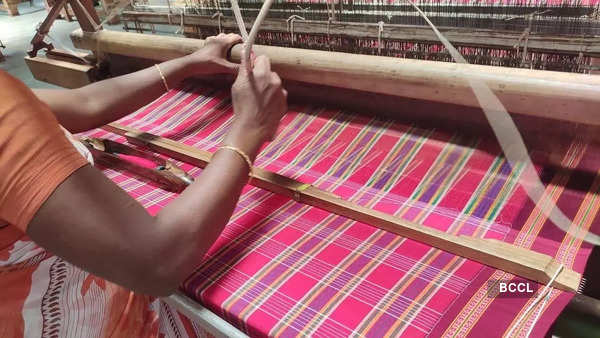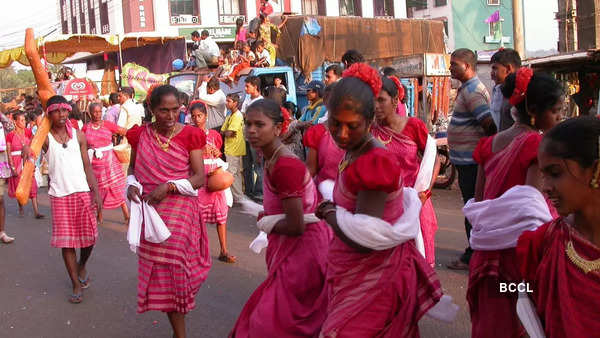Origins of the Kunbi Sari
The Kunbi sari is named after the Kunbi tribe, one of Goa’s indigenous communities. With a history that dates back centuries, the tribal people have played a vital role in shaping Goa’s cultural tapestry. The Kunbi sari, also known as the Kunbi drape, is a symbol of their rich heritage and craftsmanship.
The Kunbi sari originates from the indigenous Kunbi tribe of Goa. Source: University of California Libraries
Design and Aesthetics
One cannot discuss the Kunbi sari without diving into its exquisite design. This traditional garment typically features a plain body, often in earthy shades such as beige or off-white. What sets it apart, however, is the intricate, contrasting border and pallu (the decorative end of the sari). These sections are adorned with vibrant, handwoven patterns that showcase the Kunbi community’s expertise in traditional weaving techniques.
The beauty of the Kunbi sari lies in its simplicity. The body of the sari allows the vibrant border and pallu to take center stage. The borders are usually adorned with motifs that depict elements from nature, such as birds, animals, flowers, and trees. These motifs not only add aesthetic appeal but also reflect the deep connection between the Kunbi people and their natural surroundings.
Weaving Techniques
Crafting a Kunbi sari is a labor-intensive process that requires exceptional skill and precision. These saris are traditionally handwoven on looms using locally sourced materials. The Kunbi community primarily uses cotton and silk threads to weave these exquisite garments. The weaving process can take several days, and it often involves a collective effort within the community.

Weaving techniques of the kunbi sari. Source: Knocksense
One of the most remarkable aspects of Kunbi saris is the use of a tie-dye technique known as ‘bandhni’ or ‘bandhej.’ This technique involves tying small portions of the fabric with threads before dyeing it. Once dyed, the tied sections remain uncolored, creating mesmerizing patterns. Bandhni work adds a distinctive charm to the Kunbi sari, making each piece a work of art in its own right.
Cultural Significance
The Kunbi sari is not just a piece of clothing; it’s a symbol of tradition, culture, and identity. For generations, Kunbi women have proudly worn these saris during special occasions and festivals. The sari is an integral part of their cultural heritage, and it carries with it a sense of belonging and pride.

The sari is often worn by kunbi women during times of celebration and festivals. Source: Flickr
During weddings and other significant celebrations, Kunbi brides often don the sari as a mark of respect for their roots and ancestors. The garment’s vibrant colors and intricate patterns make it a standout choice for such occasions, reflecting the joy and vibrancy of these moments.
Contemporary Revival
In recent years, there has been a resurgence of interest in the Kunbi sari, not only among the Kunbi community but also among fashion enthusiasts and designers. Many designers have incorporated elements of the sari into their collections, breathing new life into this age-old garment.
The revival of the famous sari is not just a fashion trend; it’s a celebration of Goa’s cultural diversity and heritage. As more people embrace the beauty and craftsmanship of these saris, they contribute to the preservation and recognition of the Kunbi community’s invaluable contribution to Goa’s cultural identity.
This item of clothing is more than just cloth or fabric; it’s a living testament to Goa’s rich cultural heritage. This traditional garment, with its intricate design and deep-rooted history, has transcended generations, preserving the traditions and artistry of the Kunbi community.
As the world continues to change, the Kunbi sari remains a symbol of resilience and pride, a reminder that the beauty of tradition can withstand the test of time. With each intricate motif and vibrant border, the Kunbi sari weaves a story of a community deeply connected to its roots and the natural world that surrounds it. It is a celebration of Goa’s diversity and a tribute to the artisans who have kept this cultural treasure alive for centuries.
